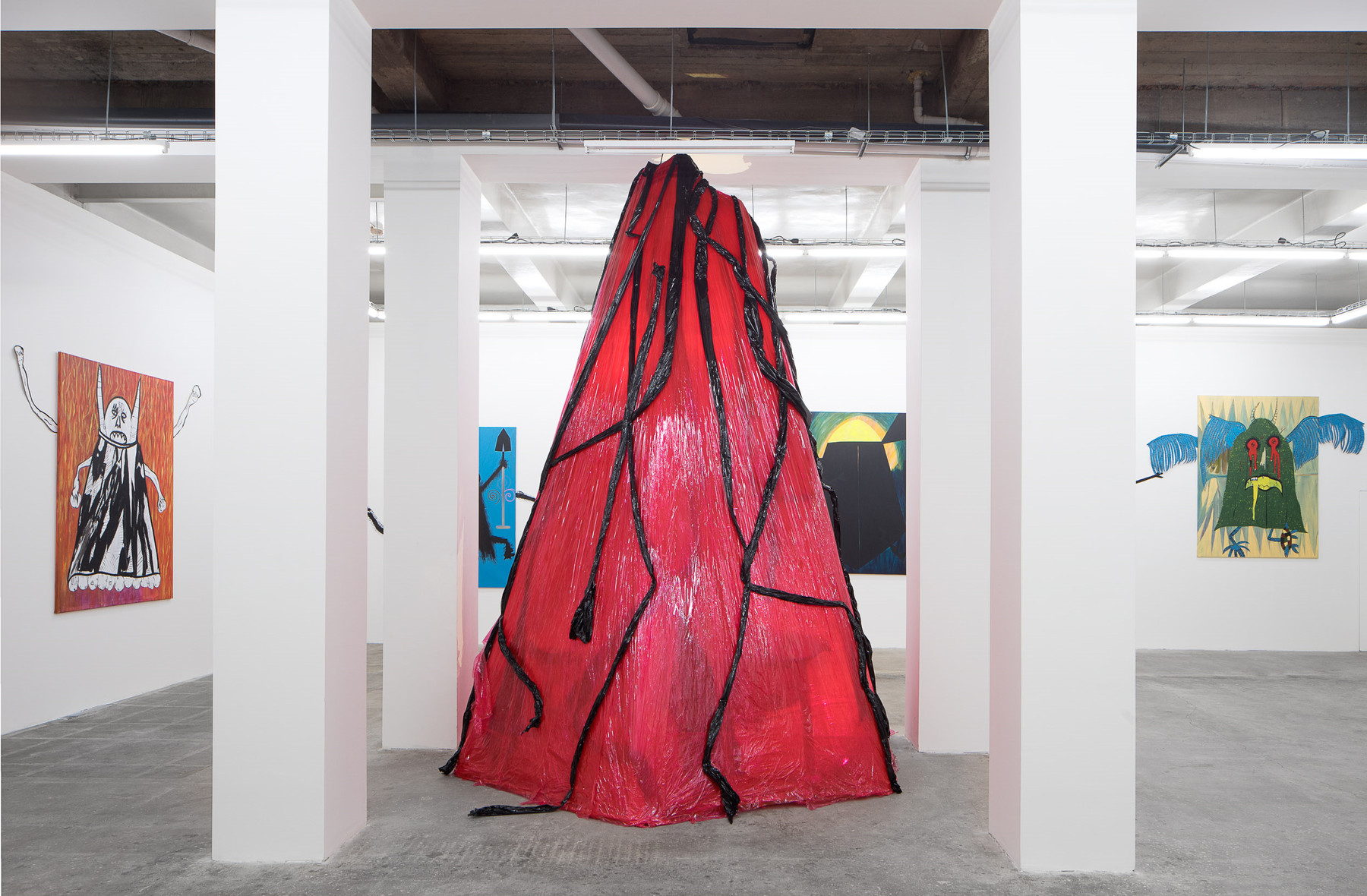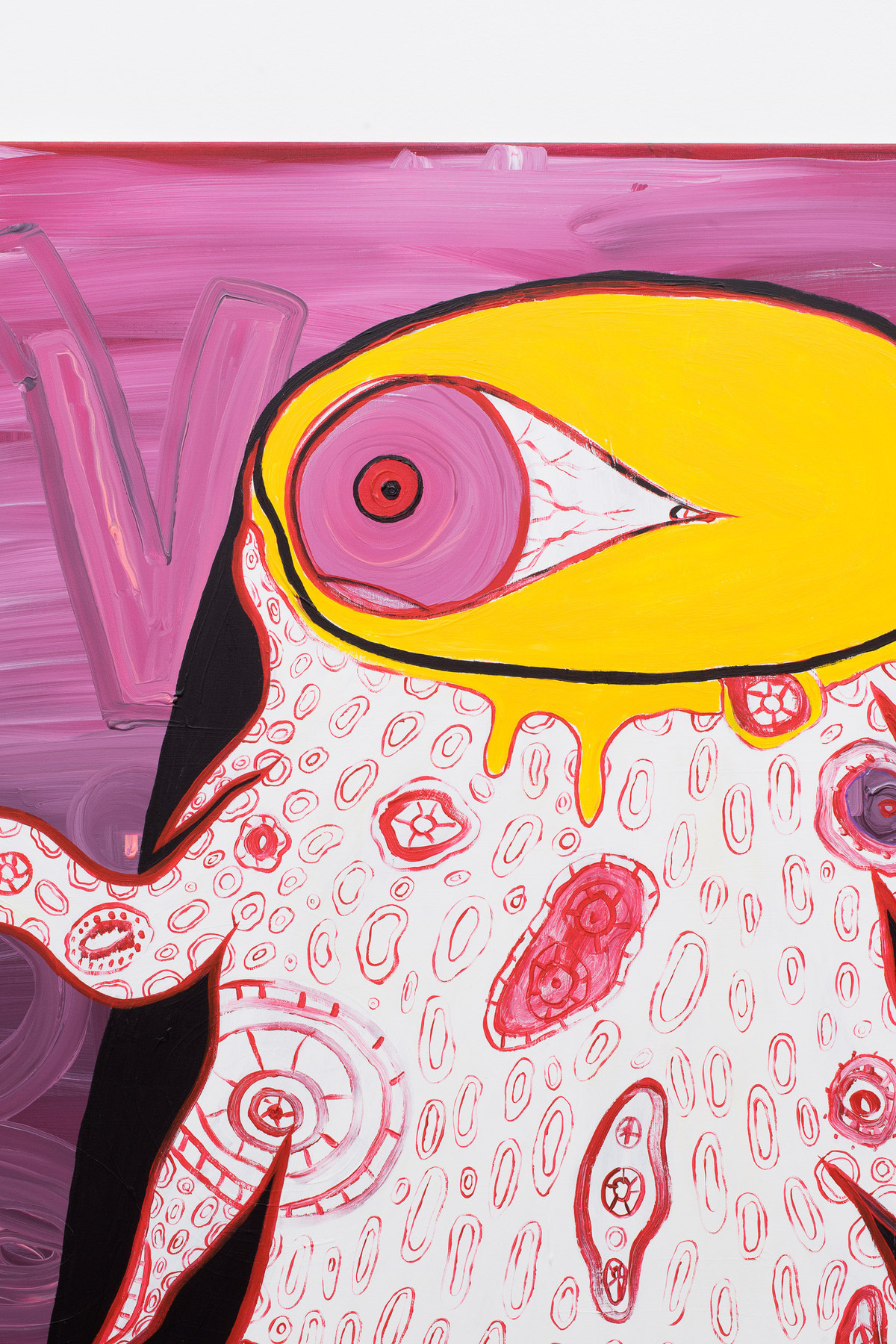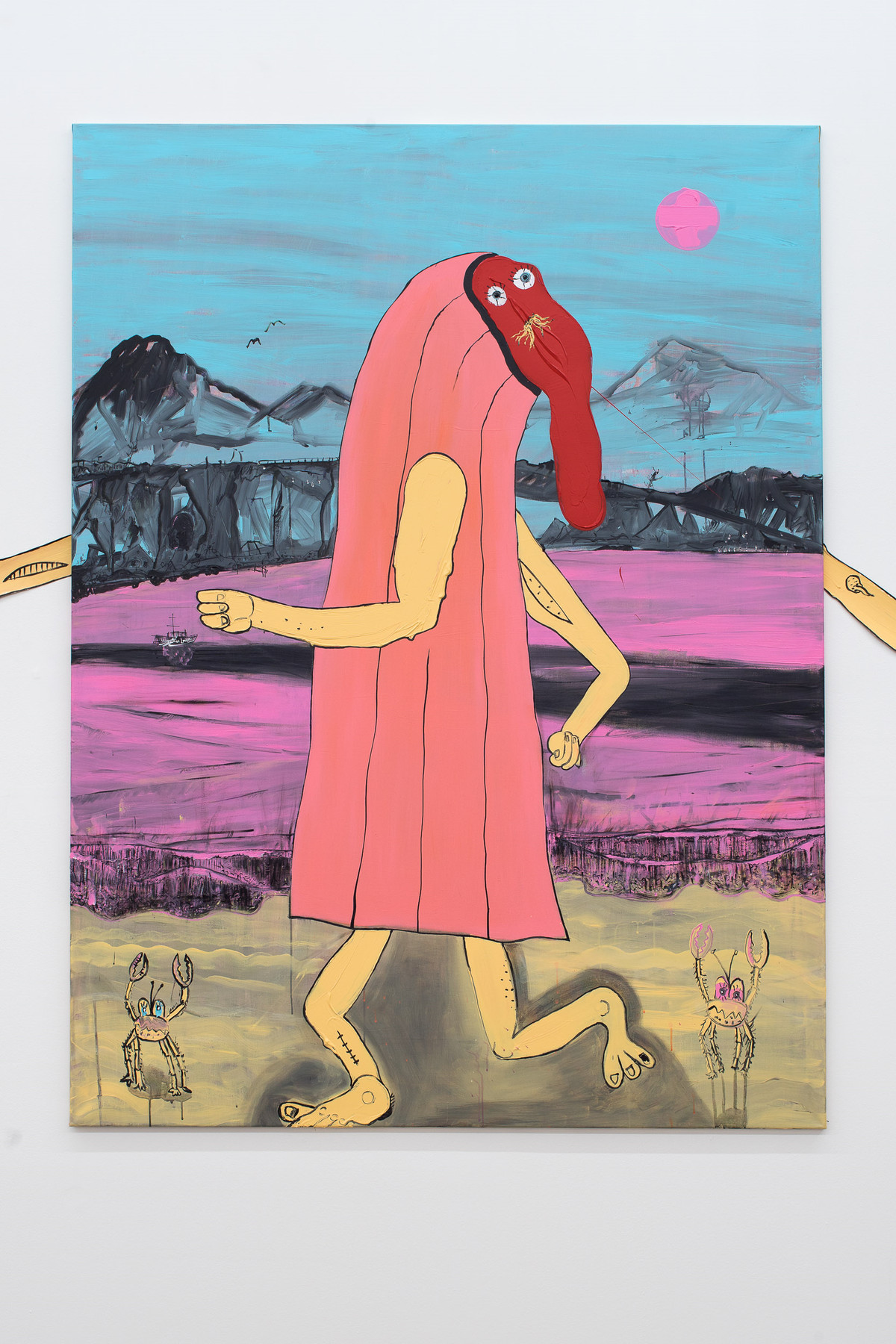Artist: Václav Girsa
Exhibition title: Magmatic Laf
Venue: SVIT, Prague, The Czech Republic
Date: January 12 – March 1, 2019
Photography: all images copyright and courtesy of the artist and SVIT, Prague
¨There were, in such voyages, incalculable local dangers; as well as that shocking final peril which gibbers unmentionable outside the ordered universe, where no dreams reach; that last amorphous blight of nethermost confusion which blasphemes and bubbles at the center of all infinity—the boundless daemon sultan Azathoth,whose name no lips dare speak aloud, and who gnaws hungrily in inconceivable, unlighted chambers beyond time amidst the muffled, maddening beating of vile drums and the thin, monotonous whine of accursed flutes; to which detestable pounding and piping dance slowly, awkwardly, and absurdly the gigantic. Ultimate gods, the blind, voiceless, tenebrous, mindless Other gods whose soul and messenger is the crawling chaos Nyarlathotep.
-P. Lovecraft, The Dream-Quest of Unknown Kadath
Sociologists call our era liquid and unstable. However, there are entities that have had their say in the processes of fluidity and reshuffling already for millions of years. We are standing amidst a volcanic whirl and the paintings send out repeated messages to us with mixed expressions – urgent, comical, embarrassing, slimy, spontaneous, smart, empty, dense, pleasing, rude, elegant, black, white, colourful. All the diverse forms that scientists’ reports have to take to express the urgency of climate change. The images appear comical and colourful but there is a solemnity that does not allow for exhilaration – as if Lovecraft meets Lovelock.
This solemnity may stem from the way the paintings are installed in a composition that both denies and underlines their uniqueness. Aside from whirling, the installation seems to race against Fme which is, however, caught in a circular motion and, according to climatologists’ catastrophic warnings, there is not enough of it for the extensive changes civilization must undertake. The theory of the self-regulating system, Gaia, can hardly help the human species either, as even its author, James Lovelock, believes that around 2040 or 2050 the Earth will warm up to the point where fields in Europe turn into deserts and people start migrating in search of water, food and cool air. However, because he sees Earth as a one superorganism, Lovelock predicts that by the end of the century the fever will stop, settling at 8 °C above the present temperature. A similar situation occurred 55 million years ago in the Eocene when living organisms moved to the cooler poles and the Earth experienced a massive volcanic eruption.
A super-volcanic eruption could also solve (or rather, put off) our current problem because it would disperse sulphur particles through the atmosphere and reflect solar radiation. It is as if Girsa has assumed some of Lovelock’s views of the Earth as organism. His volcanic cones have arms, legs, tentacles, hooves, claws and even human expressions and problems. In the context of Lovelock’s theory, the omnipresent diversity of Girsa’s images (graphic, expressive, pictographic, mediumistic, geometric, descriptive) refers to the diversity of organisms, a guarantee of Gaia’s overall health. Girsa’s interest in volcanoes is not momentary – he was already drawing them as a child. He also collected precious stones and magmatic rocks and stored them under his bed along with walnuts because he had read somewhere that this combination is good for one’s health. He visited several volcanoes in New Zealand, as well as Etna, Vesuvius and Nisyros where he conducted specialized artistic research in the Stefanos crater; the drawings he created there gave rise to some of his paintings. Girsa’s work is always biographical in some way and fed by personal experience, and this exhibition is no exception: some of the paintings capture his music band, Střešovická kramle, as well as the artist himself.
The Kokon Haka dance, performed at the opening, is meant to show that the paintings, despite being attached to the wall, do not always guarantee a zone of safe contemplation. Girsa claims that he feels very good and happy inside craters and that he is waiting for one of the super-volcanoes to break into its dance. He searches daily for any news about their activity.
Automatic writer









































